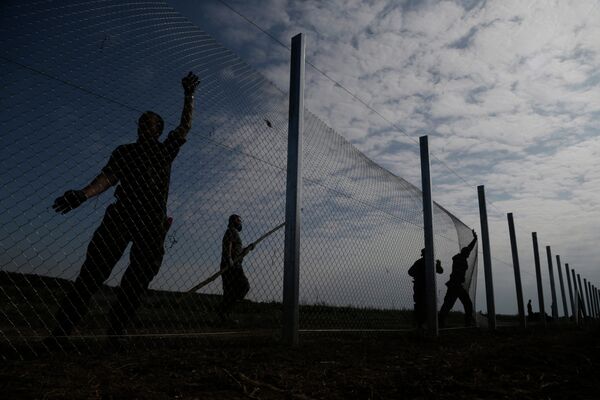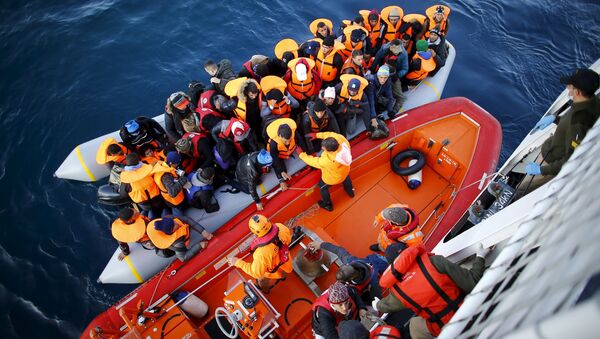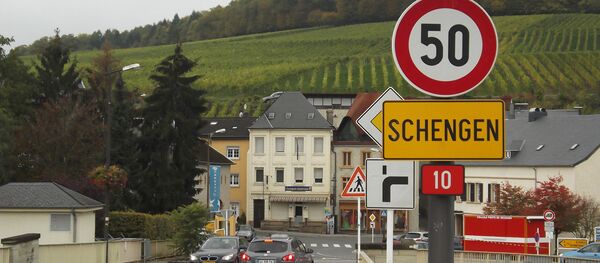In 2014, Amnesty International's director for Europe and Central Asia John Daluisen said "the priority must be to protect lives rather than creating an impenetrable fortress."
Everyone has the right to seek asylum & we ALL have an obligation to help. #RefugeesWelcome https://t.co/pTEcvRwx28 pic.twitter.com/0NVlw8hMXn
— AmnestyInternational (@amnesty) November 9, 2015
In October 2015, Director of Human Rights Watch Peter Bouckaert asked "what is the European Union doing?" after 26 men, women and children drowned trying to reach Greece.
Indeed, the EU has come under fire from NGOs, volunteer rescuers and human rights organizations for taking too long to act on their various pledges and promises to resettle asylum seekers fairly and increase the number of processing centers and border controls.
#MigrationEU: @EP_Justice committee discuss #RefugeeCrisis w/ @EU_Commission @ 10.15am CET https://t.co/1i67P3sIGn pic.twitter.com/MutISxG7HZ
— European Parliament (@Europarl_EN) November 10, 2015
But after numerous mini summits, emergency summits and extraordinary meetings between EU leaders, they have only just agreed to deliver quicker on their promises and pledges to avoid what they refer to as a "humanitarian catastrophe."
"The EU has to do everything it can to avoid a humanitarian catastrophe as winter approaches," immigration minister Jean Asselborn told reporters.
Nodding Not Listening
So far, 147 asylum seekers have been relocated to Sweden and Luxembourg. Ten thousand people arrive by boat every day in Greece and still the European Commission waits for member states to reveal how many spaces they have allocated for migrants.
In their most recent meeting, ministers agreed "that all participating member states will speed up the relocation process."
They have said that before — and it appears member states may be nodding — but not listening.
More than 540 000 migrants arrived on the Greek islands in the first 10 months of 2015 https://t.co/G7kAGRiLo7 pic.twitter.com/ow0ZzKy6Xw
— Frontex (@FrontexEU) November 10, 2015
EU leaders also recently agreed to increase its Frontex presence in the Aegean Sea — but member states have so far provided less than half of the 743 border staff requested by Frontex.
The European Asylum Support Office is still waiting for 374 more migration experts.
More Money More Problems
The EU has pledged US$18.6 million (€17m) to help Serbia and the former Yugoslav Republic of Macedonia cope with the escalating numbers of refugees treading the Western Balkan Route to reach northern Europe.
Yet recent reports reveal that refugees were repelled by taser guns on Macedonia's border with Greece.
UPDATE: Tense night in #Greece #FRYOM. With #Idomeni border closed for 1 hour,1000s tried to push through & were repelled with taser guns
— MSF Sea (@MSF_Sea) November 10, 2015
The EC has also announced that it will give US$68 million (€62m) in humanitarian aid to support displaced Syrians. Commissioner Christos Stylianides said:
"We must continue to get humanitarian aid to Syrians in need as the coming winter will bring additional hardship to the most vulnerable. That's why the European Commission is taking action, getting lifesaving humanitarian aid to displaced Syrians inside the country and refugees in neighboring countries."
Pushed Back at The Border by the Bloc
Despite being warned a year ago not to create "impenetrable fortresses", fences are the norm on Bulgaria's border with Turkey, Spain's with Morocco, and Hungary's with Serbia.
According to a forthcoming report by Amnesty International (AI), 'Fear and Fences: Europe's Response to Keeping Refugees At Bay', Europe's policies and practices aim to prevent people from arriving, instead of offering protection provided to refugees and migrants under international and European law.

Rather than stemming arrivals, this flawed approach, according to AI, is pushing people to take even more dangerous routes, and failing those in need of and with the right to asylum.
Three months ago German Chancellor Angela Merkel said: "We must tackle quickly the issue of immigration and in a European spirit — that means in a spirit of solidarity — and find solutions."
Two years into the refugee crisis — leaders are still holding meetings to work out how to avoid a "humanitarian catastrophe."
It's not just individual refugees and migrants who are being pushed back at and blocked at European Union borders.
At another meeting in Malta on 11 November, Europe is set to offer US$3.8 billion (€3.6bn) in funds to African nations in return for countries taking back economic migrants; potentially pushing back migrants on a mass scale as a collective bloc.




